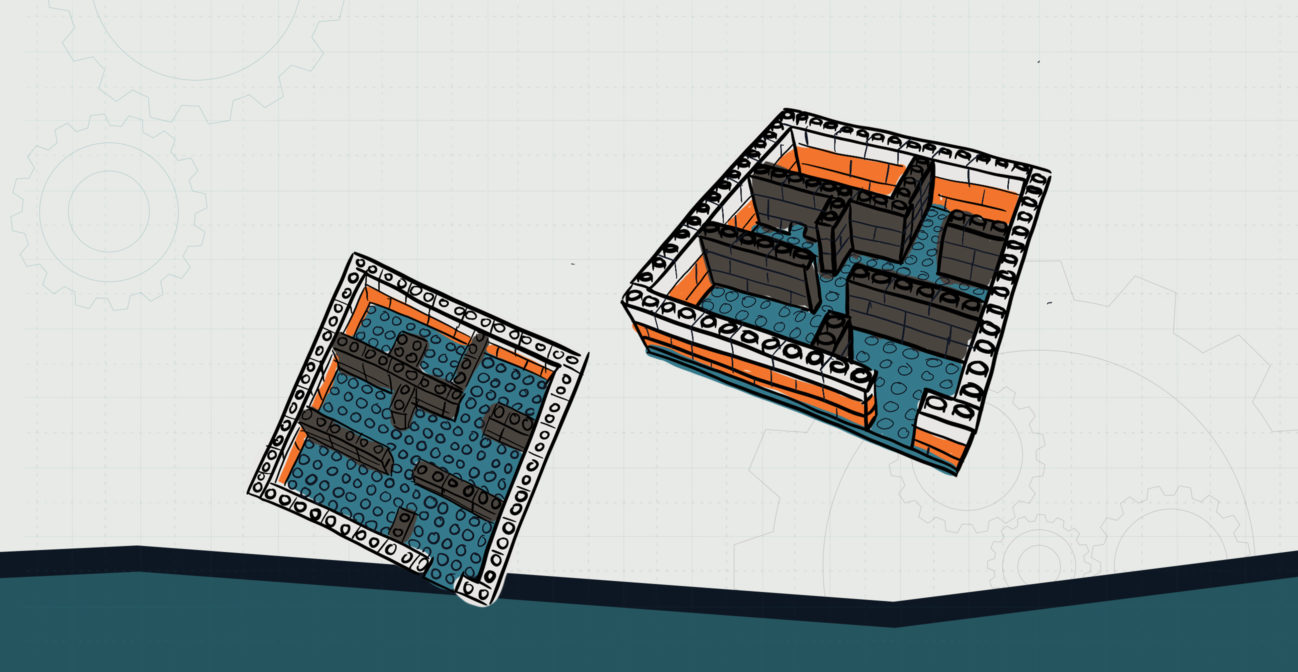Objective:
Child will be able to find the perimeter of rectangles.
Essential Question(s):
What strategies can we use to find the area of an irregular shape?
How do we find the perimeter of a rectangle?
Special Materials:
Paper and pencil for recording data
Bricks Required:
16×16 plates, 1xN bricks for building the house
Project Structure:
- Give child a 16×16 plate and additional 1xN bricks for building a house. The house should
include walls within the interior; gaps for windows and doors are optional. Child may
furnish their houses with additional bricks (2xN-plus).
- Ask child to make a list of the rooms and count the sides of each, measuring the area of
each one by counting the wall studs.
- Ask child to add up the areas of each room to find the total area of the house.
- Child should use their lists to find the perimeter of each room. They should also find the
perimeter of the whole house. It’s OK for the house not to be perfectly square.
Engage/Explore:
- Provide child with 16×16 plates to build a floor plan of a house or school.
- Ask child to use different colored bricks for the interior and exterior walls.
- Ask child a series of questions to determine, based on their floor plans:
- “How do you find the perimeter of each room?”
- “How might you determine the area of the entire structure?”
- “How did you find the area of each room?”
- “How did you find the area of the entire structure?”
- You may find that the child counts the number of studs per wall as part of their measurements. Be sure to facilitate understanding of why width of walls should not be included.
- Have child take measurements in SOHO studs.
Explain/Elaborate:
- Provide child time to explain their answers to the perimeter and area questions above.
- Child should discuss and articulate the ways in which they can determine complex areas.
- “Is there more than one way?”
- “Do you get the same answer when using multiple methods?”
- Have child repeat the process using the metric system.
